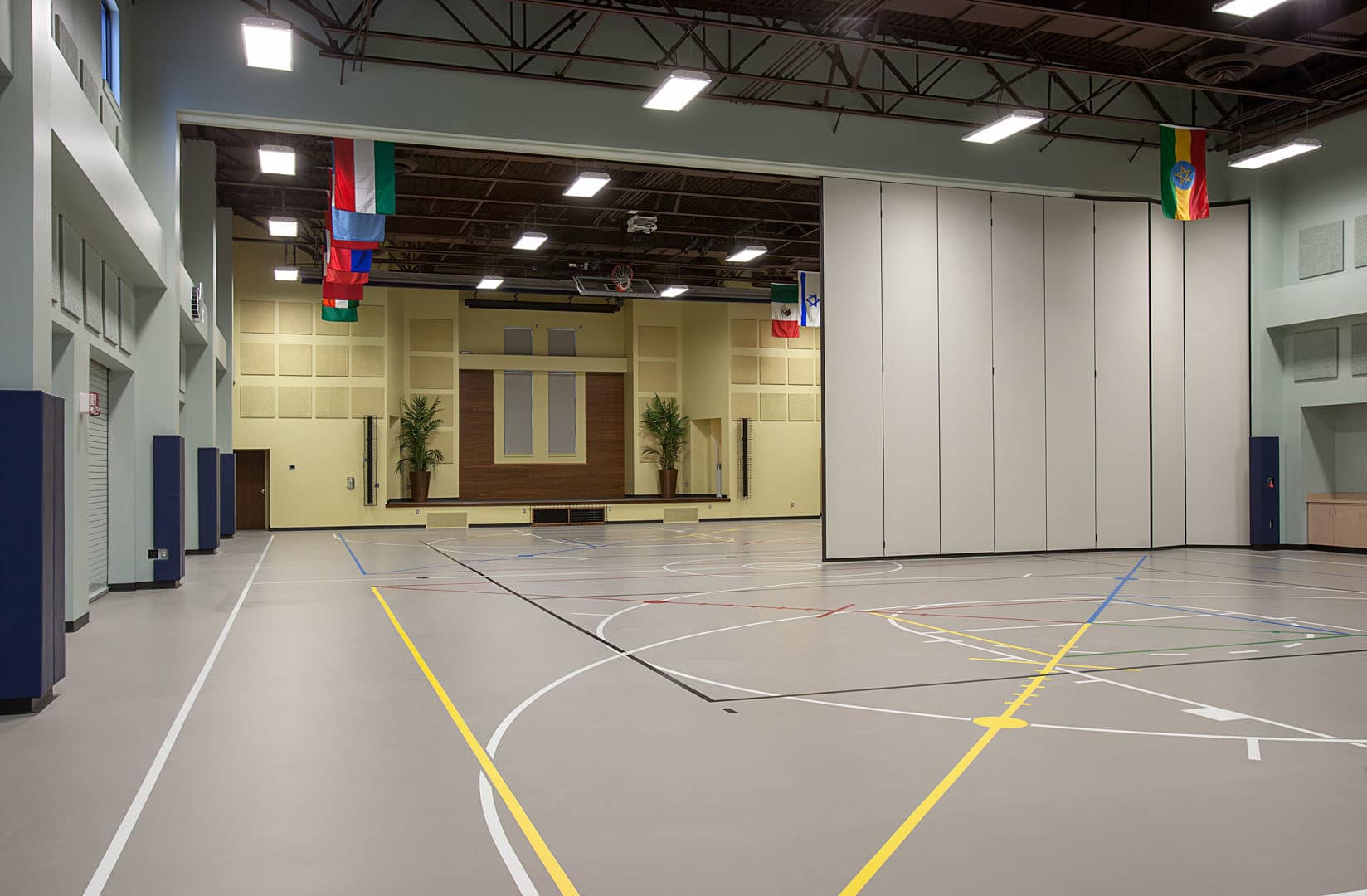1. Use Space Efficiently
Before you build for the wrong reasons, decide if your church is short of space.
Can your needs be met by changing or rearranging?
- Shifting classes to rooms sized for the actual attendance should give a growing church more room for growth and time to plan for expansion.
- Explore other options or locations such as holding two Bible study hours or have them be home-based groups.
Can your needs be met by changing times or frequency?
- A church with an adequate worship capacity and inadequate classroom capacity may need to consider two teaching hours with the worship time in between.
- A growing church with enough parking but desperate for both worship and classroom space should consider having two worship services with two simultaneous teaching hours.
Can your needs be met by using your existing facilities?
- Churches should use their gym or fellowship hall and turning the large open rooms into temporary classrooms by dividing the space with portable room dividing walls. There is no more practical a way to divide a gym temporarily for classes, other than by using portable room dividers.
- Room dividers come in many heights, lengths, fabrics, and colors. They can be configured in many ways and are quickly closed and moved out-of-the-way for activities requiring the large open room.
–Screenflex
www.screenflex.com
2. Become Savvy About Sound
When planning space division for worship facilities, the first factor to be considered is acoustical control. Will a nursery be located on one side of a space and a Bible study on the other? If sound transmission is a concern, operable walls may be for you.
Designed for the most demanding performance criteria, operable walls offer the highest level of sound isolation. Acoustically-engineered to serve as a sound barrier, flat-panel folding walls can achieve ratings up to Sound Transmission Class (STC) 55, a level at which shouting is inaudible. At STC 50, for comparison, shouting and loud sounds are barely audible; 99 percent of the general population would not be annoyed.
An operable wall can be specified in a range of STC ratings, which is one of the factors in its cost. The acoustical rating of a product is evaluated by an independent laboratory using standard testing procedures established by The American Society of Testing and Materials. The rating is then published by the manufacturer. For more details, visit www.astm.org.
When planning for sound control, the acoustical performance of the operable wall is not the only factor to be considered. The Noise Isolation Class (NIC) rating, also referred to as a “field test,” assesses performance in the field rather than in a lab setting. This rating is affected by absorptive materials in the room as well as other paths of sound transmission called flanking paths. These leaks in construction allow sound to pass through pathways such as floors, underneath walls, over ceilings, through pipes, recessed lights, outlets, ductwork, etc.
An operable wall with the highest STC rating can’t act as a sound barrier if the sound is escaping over, under or around it. Flanking paths must be blocked with construction equal to the acoustical rating of the operable wall. If sound control is a critical issue for the space you plan to divide, it may be worthwhile to hire an acoustic consultant to make an assessment. To find a qualified professional, see www.acousticalsociety.org.
–Panelfold
www.panelfold.com
3. Pick the Right Product for Your Space
There are so many choices—which is the best for you?
Operable Panels
Operable partitions are a series of panels suspended from overhead track. Operables provide optimum space flexibility. When in place, the panels are similar in appearance to a permanent wall.
Most operable panels are about 4′ wide and need approximately 4″ depth per panel for stacking space. The panels typically consist of a steel or aluminum frame with faces of gypsum, steel, MDF, or a combination of materials to meet the required sound control. The faces may be finished with a variety of materials, including vinyl, fabric, or carpet. Custom finishes and substrates may also be ordered to coordinate with or match the existing walls.
The panels include sound seals. The method of setting them and sealing the partition in place varies by manufacturer. Retractable seals perform best because they do not leave rub marks on the ceiling or floor as vinyl seals often do. Retractable seals don’t tear or fall off. While retractable seals are initially more expensive, they perform better over the life of the partition.
Operable options include pass thru doors for access into the adjoining space, pocket doors (to cover the storage area when the panels are not in use), inset tack or marker boards, eraser pockets, and windows.
Accordion Doors
Choose accordion doors to quickly create classrooms or meeting areas. They are easy to set in place – simply pull the door across the opening and latch. Optional switches, curves, and posts allow the doors to be moved or stored in alternate locations. Multiple doors can be attached in a straight line, curved, or intersections to create the functionality needed.
They can be used in combination with operable partitions to optimize space flexibility. Tall, long doors are available with optional electric operation. Marker boards or pass doors are not an option.
Portable Panels
Portable panels are unitized individual panels that do not require overhead support, but they provide space separation and mid-range sound control. The top of the panel extends into a ceiling channel for lateral stability. Portables are an alternative if your space lacks sufficient overhead support for operable or accordion partitions and the panels aren’t moved frequently. The panels are manually placed into position and fastened together. Pass doors are an option.
Mobile Partitions
Used as a sight divider rather than a room divider, a mobile partition is a series of part-high panels hinged together. They move on floor casters and fold into a compact unit. They are not sound rated, but they can provide visual separation and the panels are hinged, allowing the user to create a curve or angles. Multiple units may be attached to divide larger areas. Optional marker boards add to their versatility. It is also possible to combine various types of partitions for more versatility. Accordion doors may be combined with a portable pass door panel, allowing access to adjacent spaces.
–Hufcor
www.hufcor.com
4. Consider Options for Finishes
The industry is based around providing products in textured vinyls of one sort or another. Modern vinyls are inexpensive, easy to clean (most of the time), and generally Class A fire-rated (which means they will not help a fire along should the unthinkable ever happen). But, depending on finish selection, the sky is the limit.
Because of the way in which they move and their relatively narrow faces, not all finishes can be successfully applied to accordions – vinyl, cloth fabrics, vertical ribbed carpets, acoustical fabric, and for some wood veneers are available.
Since operable walls are drywall partitions with wheels above, you can do almost anything – from what is on the face of the accordions to mirrored glass, to wallpaper, to markerboards (from standard heights of 48” to full-height), to laminates or all types.
–Barranger & Company
www.barranger.com
5. Don’t Forget Preventative Maintenance and Warranties
In order for an “operable” wall system to be “operable,” then it must be “operable.” Invest in a contractual twice yearly maintenance agreement with a qualified contractor and it will reduce downtime as well as maintain aesthetics. Read warranties carefully. Most are “limited” (some severely), maximum two years, have too many clauses and are for material only – no labor. Know what is covered, what to do, and who to call if a problem arises.
Finally, resist the urge to do it yourself. Every religious body is blessed with members with varied skills: architects, contractors, acousticians, carpenters, etc. There is more to the operable wall business than what you see. Let a reputable manufacturer do his job, and you should be more than pleased.
— Moderco
www.moderco.com













